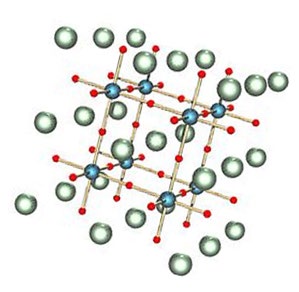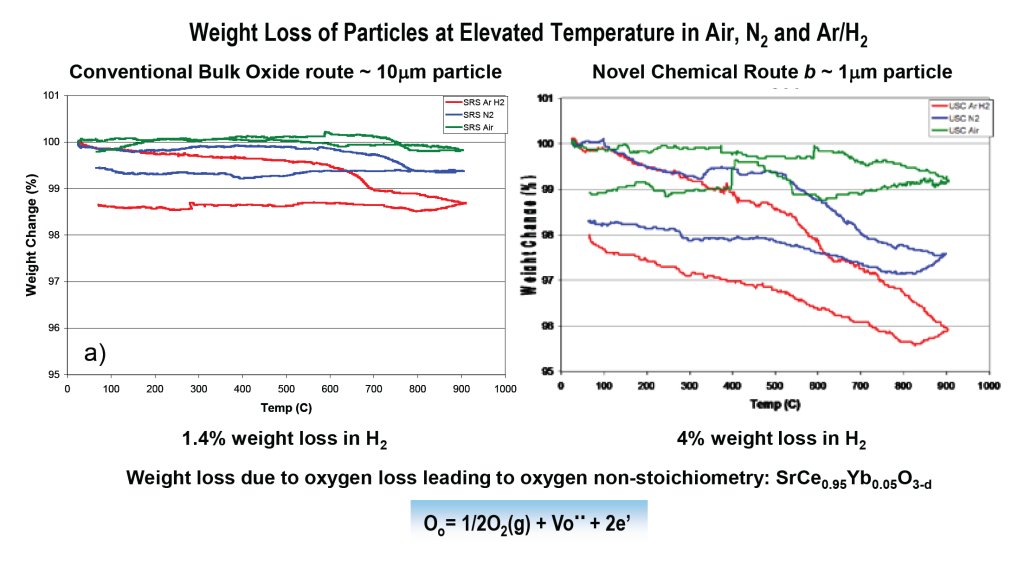Tech Briefs
Savannah River National Laboratory
Nanocrystalline Separation Membrane for Improved Hydrogen Flux
Scientists at the Savannah River National Laboratory have developed ionic transport membranes with improved ionic and electronic conductivity. Using a new processing technique, perovskite materials were modified to improve conductivity by altering the microstructure without changing the ratio of the chemical constituents. The result is a nanocrystalline material that exhibits an increase in weight loss over similar materials made under standard bulk oxide synthesis. The enhanced oxygen loss translates into an increase in the number of electron charge carriers and elevated electronic conducting which impacts applications in catalysis, sensors, separation, and energy conversion device operation.
Background
Membrane separations are a key enabling technology for energy conversion devices. Ionic transport membranes must have both proton and electronic conductivity to function as hydrogen separation membranes without an external power supply. In addition, membrane materials electronic conductivity or material crystal stability should not be greatly affected by the presence of contaminant gases such as CO2, CO, CH4, and H2O that are associated with steam reforming/water gas shift reactions.
Perovskite materials (ABO3) of the general formula SrCeO3 and BaCeO3 form the basis of most ceramic compositions with proton conductivities in the range of 2 x 10-2 S/cm at 600°C, showing good stability under the extremely low oxygen partial pressure where many perovskites decompose to their primary oxides. However they suffer from low electronic conductivity which limits use as hydrogen separation membrane. Using a new perovskite processing technique consisting of novel chemical synthesis followed by a rapid sintering technique, SRNL scientists have been able to alter the microstructure resulting in an order of magnitude increase in electronic conductivity and enhanced separation membrane performance.


At a glance
- Improved electronic conduction
- Suitable for hydrogen separation
- Separates contaminant gases
- Patent pending
Partnering opportunities
SRNL invites interested companies with proven capabilities in this area of expertise to develop commercial applications for this process or product under a cooperative research and development agreement or licensing agreement. Interested companies will be requested to submit a business plan setting forth company qualifications, strategies, activities, and milestones for commercializing this invention. Qualifications should include past experience at bringing similar products to market, reasonable schedule for product launch, sufficient manufacturing capacity, established distribution networks, and evidence of sufficient financial resources for product development and launch.
Download Tech Brief
Contact Information
Savannah River National Laboratory
E-mail: partnerships@srnl.doe.gov